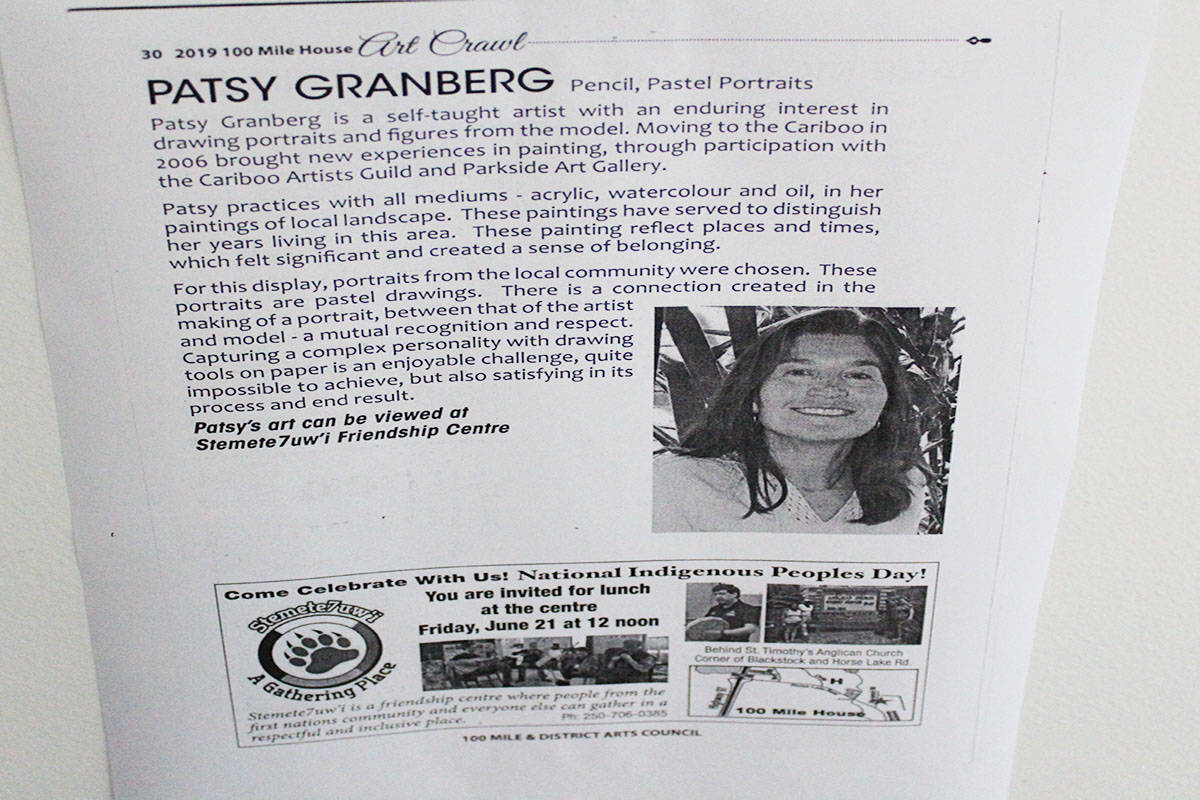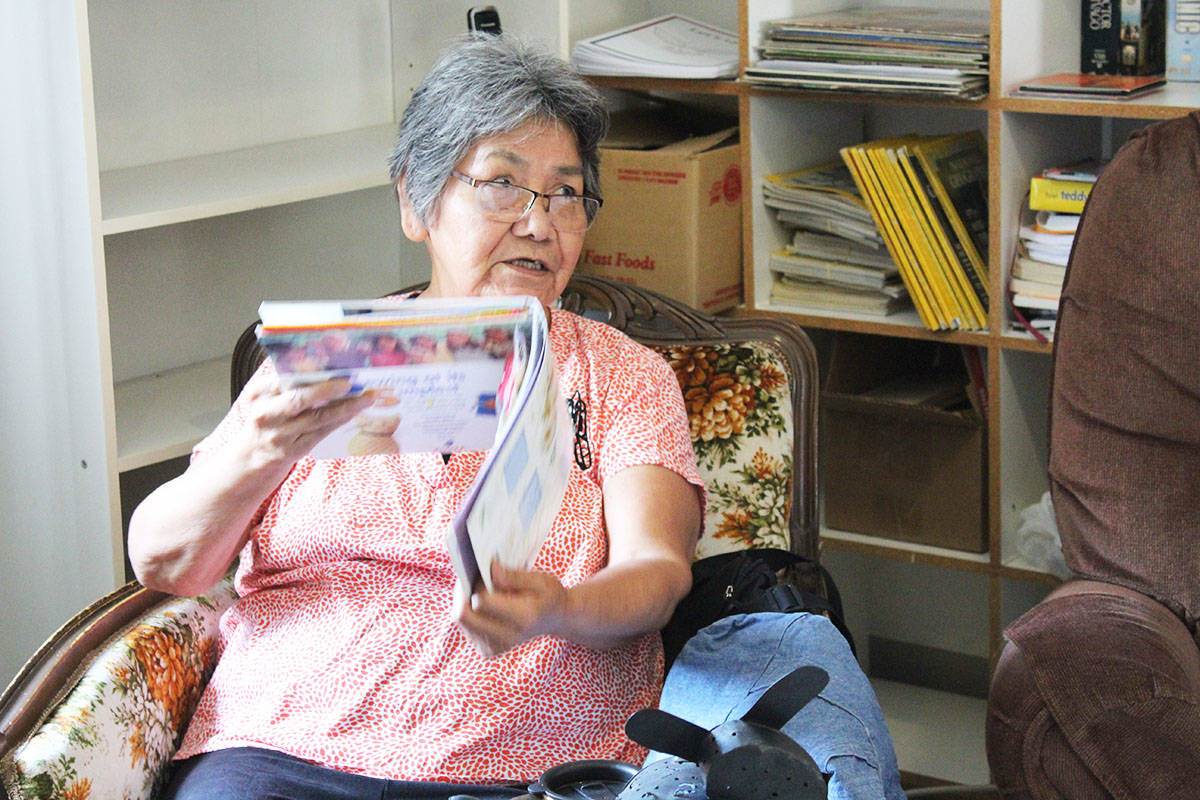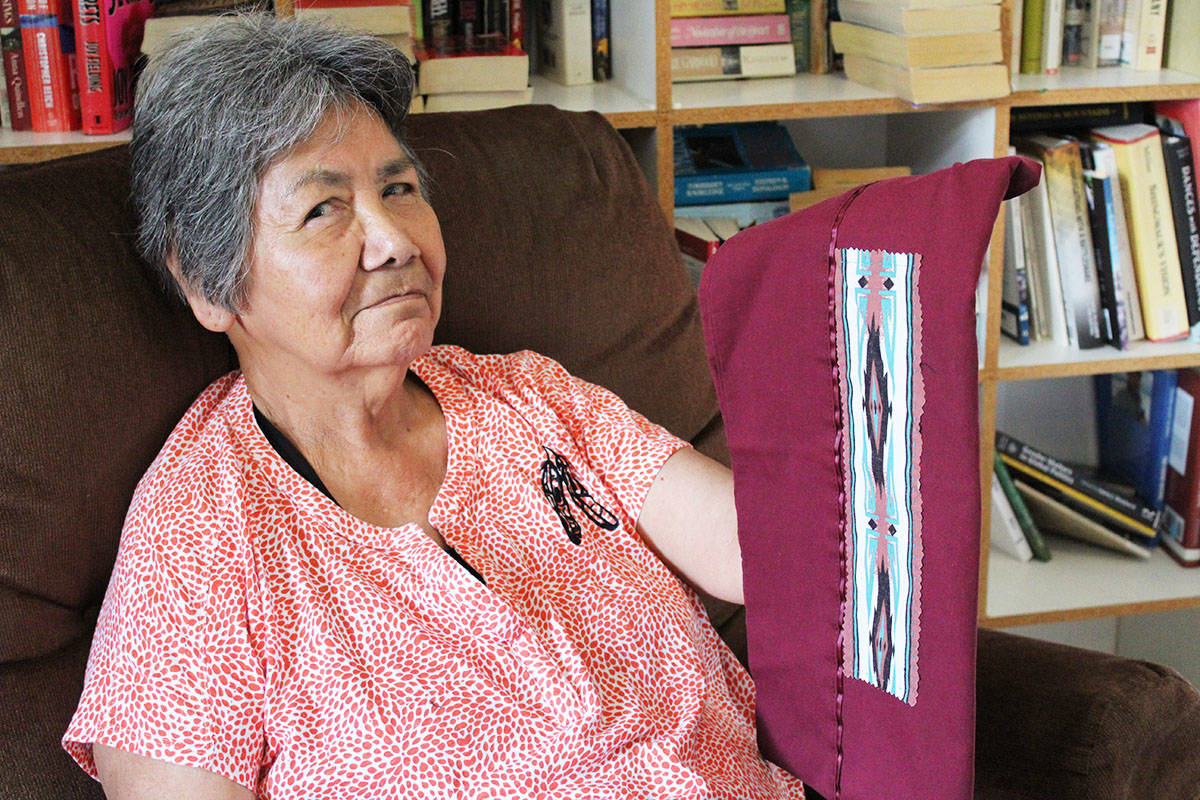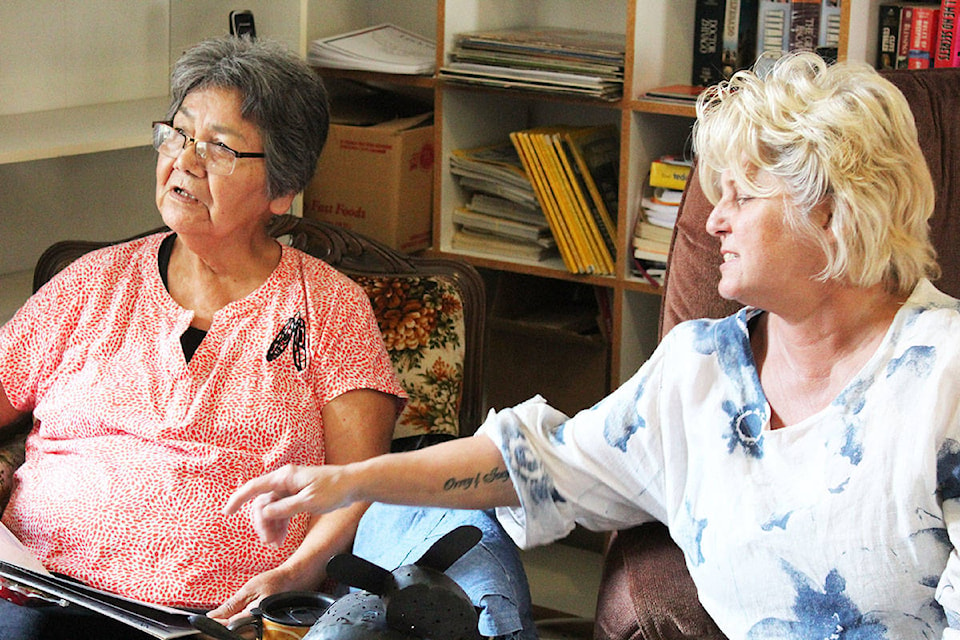On June 21, 100 Mile House celebrated the opening of its Art Crawl, but more importantly, the community recognized National Indigenous Peoples Day. Some residents made time for both activities and those who attended the Stemete7uw’i Friendship Centre were amongst those individuals.
Following the Art Crawl’s opening reception at Parkside Art Gallery, community members visited the Friendship Centre to share more art and enjoy a lunch of home-made bannock and moose stew.
In a quiet corner of the Friendship Centre, a woman named Ella Gilbert sat in conversation with her peers.
In roughly two hours at the Centre, Gilbert managed to create a beautiful gift for her friends there. She presented that gift, a hand-stitched Navajo print, to the Friendship Centre’s coordinator Rob Diether.
Gilbert doesn’t just make hand-made prints for friends. She also makes tea towels and a variety of other hand-stitched items.
Gilbert learned to stitch during her time in the residential school system as a child. She learned to sew and stitch from one of the nuns who taught at St. Joseph’s Mission.
“It was one of the only good things I learned there,” she said. “She was one of the good ones.”
On National Indigenous Peoples Day, from the comfort of a chair in the safety of the Friendship Centre, Gilbert used art to share some of the more challenging chapters of her personal history.
Beyond her fine art endeavours, Gilbert is also an experienced linguist who teaches the Shuswap language to students from her home in Canim Lake. She is the mother of five and a grandmother to 17 children.
“I’m waiting for great-great, then I’m gonna go home,” she said with a laugh.
“A lot of our language is tonal,” Gilbert said, going on to explain the measures she took as a child to maintain her language whilst attending a school system that sought to strip it from her.
“I was the sneakiest person,” she said. “You find corners. I’m one of the lucky ones.”
Gilbert recalls practising her language in secret at the residential school and cherishing sacred summer months with her mother, who only spoke Shuswap, not English.
“They beat it out of us,” she explained, referencing St. Joseph’s Mission, where Gilbert and countless other Indigenous children were prohibited from speaking their birth language.
Read more: The tainted legacy of St. Joseph’s Mission
The trauma Gilbert experienced during her time in the residential school system has remained with her always. Now in her 70s, Gilbert is able to speak openly about the time she spent recovering.
“I had to go to three or four treatment centres,” she said. “I’ve been blessed. I just wanted something different.”
Gilbert was once addicted to alcohol but has since changed her life. As a young woman, she recalls being approached about her body shaking. An older woman advised her that the symptom indicated alcohol had taken over her life. Those words hit home, said Gilbert, who explained that the interaction helped her to undergo a sort of spiritual awakening.
“It was scary and exciting at the same time,” she said about taking the first step to enter treatment for addiction. It wasn’t a simple personal battle, but in the end, Gilbert emerged victoriously.
When her grandson was baptized 34 years ago, Gilbert decided for the last time to give up alcohol, for good.
“I didn’t want this little guy to ever see me drunk,” she said, “I went cold turkey.”
Gilbert hasn’t touched a drop in over 30 years. She credits the treatment centres she visited and those individuals who worked to help her recover along the way. The first time she saw a therapist, Gilbert was asked when she had cried most recently. She recalls that this question “broke the dam” in her, and tears spilt from her eyes. Gilbert has never been one to cry, she said but became overcome with emotion when finally faced with childhood trauma she had never really dealt with.
“An older lady picked me up off the floor,” she remembers. “I just cried and cried for about five years.”
After years of treatment, Gilbert hit a milestone when she finished a therapy session without crying, but she still seeks out support if and when she needs it.
Most of her people have not lived to be 70, she said, and many of her peers are still struggling with the trauma they endured as children in the residential school system.
“They think they’re okay, but I know different. I accept them. It would be brutal for me to try to fix them.”
Around Gilbert, and surrounding those in attendance at the gathering place, portraits of local indigenous community members looked down from the walls. These depictions were created by artist Patsy Granberg and injected a feeling of community into the space.
The conversations wound down as afternoon approached evening and friends began to head home, but Ella Gilbert’s gift will remain alongside the artwork currently featured at the Friendship Centre as part of the community’s Art Crawl.
raven.nyman@100milefreepress.net
Like us on Facebook and follow us on Twitter.



